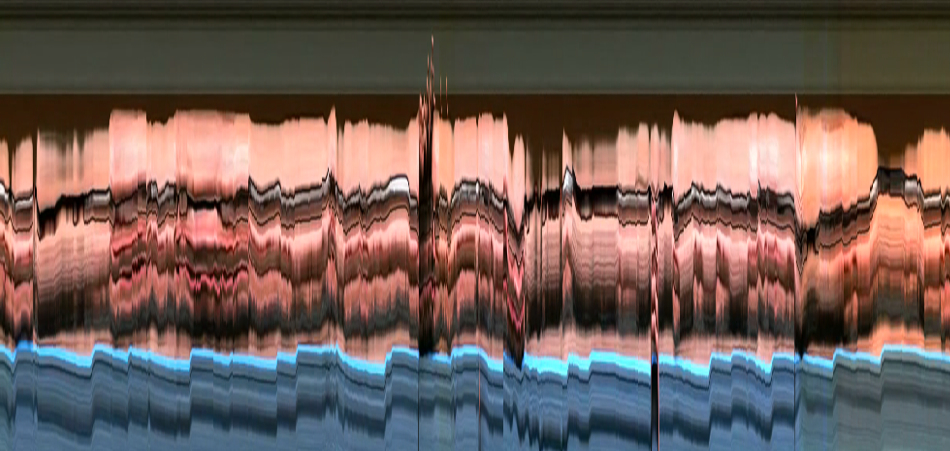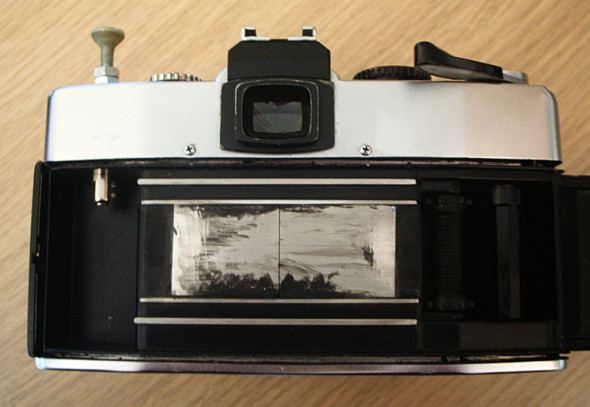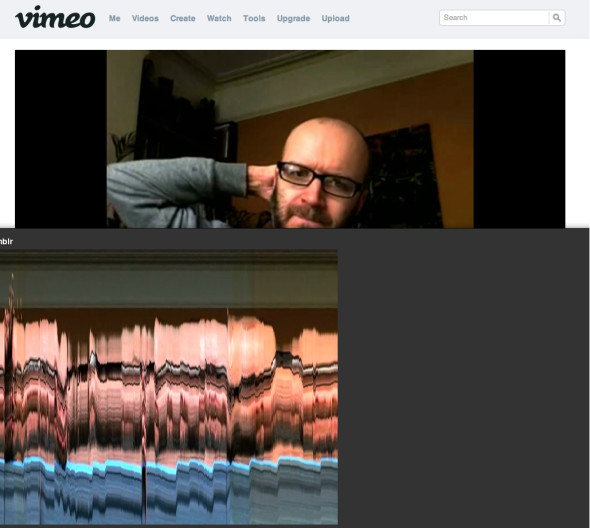
Last week I was at an event where my good chum Antonio Roberts was running a slit scan program on his computer. A webcam was pointed at the room filming people coming and going but the software was only recording one line of pixels every few seconds, building them up over time until the screen was full. The final image was therefore a kind of long exposure, or a record of time passed, frozen in a single photo. It was, needless to say, rather intriguing.
I hadn’t really come across digital slit scans before. I’d seen analogue ones which are interesting in and of themselves. Richard Kaye, a Birmingham-based vintage camera hacker, has made a couple by putting a metal 1mm slit in the camera and manually winding the film across it with the shutter open.

He generally takes his photos by panning the camera as he winds the film so that moving objects are stretched or compressed as they pass the slit.
Here’s the full set of Richard’s slit scan photos.
While writing this I’ve remembered a similar project by Adam Magyar titled Walking As One which he did for the Olympics in 2010 with the sort of camera they use at finishing lines. From this report:
This is the type of image which Adam makes – the scanner captures absolutely the present time. To its left the people are in the future and to the right they are in the past… Of course the people on the right are a few minutes older than the people on the left…
Adam uses the same technologies as the finish line cameras at the Olympic Games, which take thousands of images a second and records through a 1 pixel wide slit. The time and space slices are then placed next to one another to generate an image without perspective. This method is capable of recording movement only, with static objects and buildings appearing as stripes and lines.
Adams work is interesting but the exclusivity of using a high-grade specialist equipment was rather off-putting - I’m more interested in tools that anyone can get access to. And while Richard’s camera is awesome it doesn’t give me the control I’m after.
So the notion of being able to do this with a webcam and a personal computer is very appealing, and as I investigated further (ie, emailed Antonio for linkage) it seems there’s been a lot of work in this field.
A really simple tool is the slitscanner.js bookmarklet that runs in any modern browser. You load up a video in Vimeo or YouTube (first checking it’s using HTML5 and not Flash), hit the link which you’ve saved to your bookmarks and the program starts running, taking a 1-pixel wide screenshot of the middle of the frame fifty times a second and stacking them in a row.
Of course the success of the end result is very much determined by the style of video you give it. Lots of fast edits will give a multi-coloured barcode which is nice but not very interesting. But a relatively static video, say of me talking on Skype for an hour (something I’ve tried hacking at before), will give us something comprehendible.

And here’s the final version. (Click for full size)
I see this as a slice through time, visualising the fourth dimension if you like. It reveals movement and patters of behaviour - I seem to sit up and slowly slouch every minute or so. But my favourite part is right at the end of this sequence where I’m listening to my inquisitor, my head frozen in concentration but my breathing undulating my chest.
One of the things I’m interested in is how long exposures can be used more effectively. The dominant technique of sticking a camera on a tripod with a tiny aperture for 30 seconds is nice but isn’t really doing anything new. This feels like it might be a route to something interesting.
I’m recording my research on my newly reinvigorated Tumblr using the #slitscan tag.
Update - immediately after posting: Oh, internet, you spoil me..

